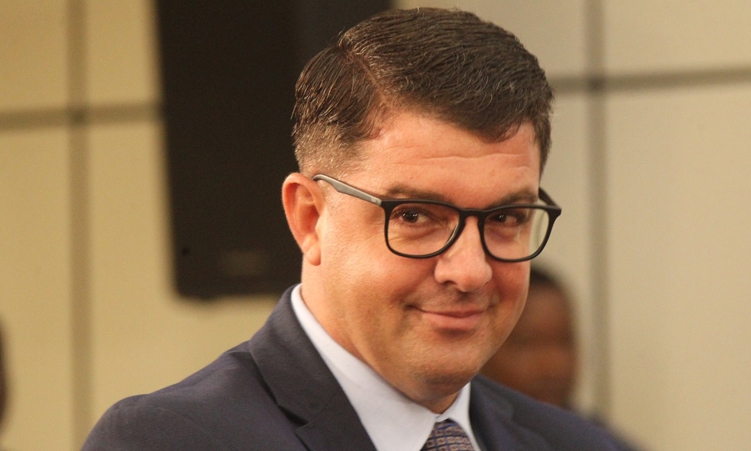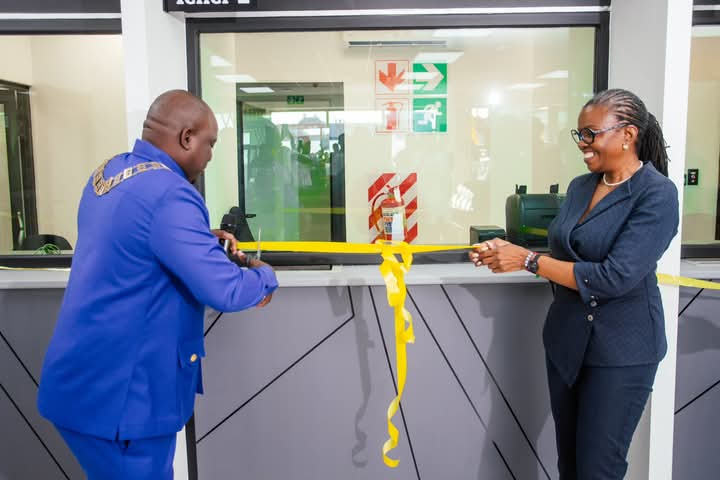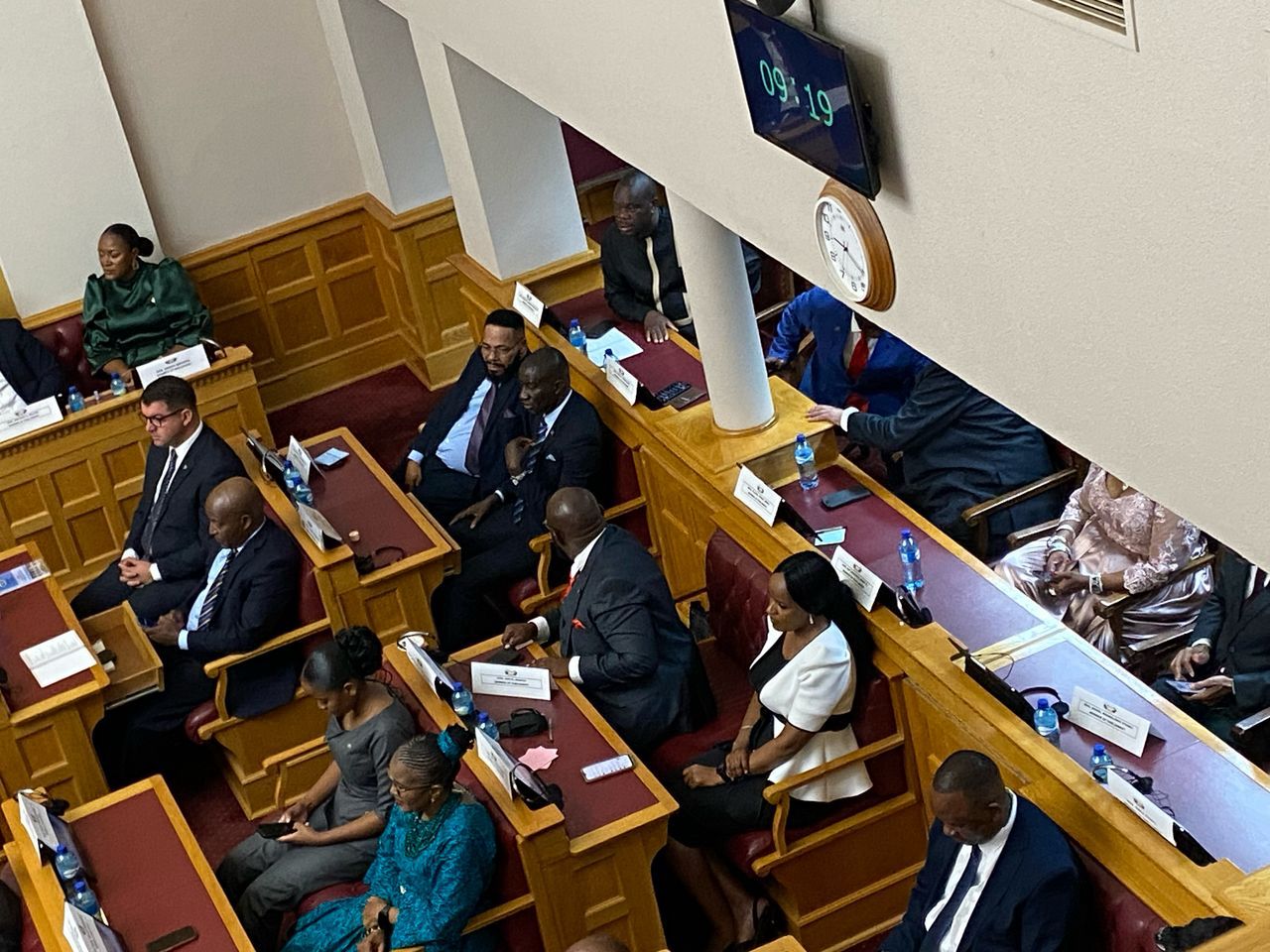For the first time, green hydrogen is being produced in Namibia, largely due to German investment. The southern African country has ambitious plans for an industry that’s still in its early stages.
In the foothills of the Namib Desert, even the good rains of 2025 have barely left a trace. Only a few mountains offer a contrast to the greyish-brown desert landscape. But it is here, about 120 kilometres northeast of the country’s largest port, Walvis Bay, that Namibia’s latest contribution to the global reduction of greenhouse gas emissions lies.
Near the town of Arandis, 44 000 solar panels gleam in the Namibian sun, which offers ideal conditions.
“On average, we have 30 hours of closed cloud cover a year,” explains Johannes Michels, managing director of Hylron, a company that began producing the first green hydrogen in Namibia in late March.
The Oshivela project is Namibia’s first modern ironworks. But unlike conventional or grey ironworks, Oshivela produces green iron because it uses power sourced through renewable energy.
According to Michels, this will make Namibia “the first country in the world to produce iron industrially without CO2 emissions.”
The idea of Namibia’s late president Hage Geingob to transform the Namibian economy using hydrogen is beginning to be realised. The country aims to industrialise and create needed jobs to curb the official unemployment rate of around 37%. Several energy initiatives have been developed in recent years, notably the Hyphen project in the Tsau //Khaeb National Park in southern Namibia.
From 2028, it is hoped that some one million tonnes of green ammonia will be produced annually, primarily for export to Europe and Asia.
But the flagship project has attracted both attention and criticism. The Namibian Chamber of Environment (NCE) fears irreversible damage to the highly sensitive ecosystem of the national park. Hyphen rejects the accusations and a comprehensive social and environmental impact study has been announced.
While the large Hyphen project is still a dream of the future, the solar field at HyIron is already supplying up to 25 megawatts of electricity. The energy is used to fuel two electrolysers, which split water into hydrogen and oxygen.
Electricity flows into a rotary kiln, where iron ore from South Africa is processed. The hydrogen is used as a reducing agent in the furnace, absorbing the oxygen atoms from the iron ore.
What remains is pig iron for use in the steel industry. Additionally, hydrogen and oxygen recombine to form water, which is then used in a cycle to produce more hydrogen.
Michels is enthusiastic about Namibia’s green energy potential and is keen to “show that there is an alternative to climate change that is not even that expensive”.
People here are fully aware of the adverse effects of climate change. Around 5 000 sheep once grazed in the area before not a drop of rain fell for 12 years.
The farm owners had to sell, laying the foundation for one of the most promising decarbonisation projects in Namibia.
Germany promotes Namibian hydrogen production
This is where Germany comes into play.
“We need to decarbonise our steel industry,” explains Rainer Baake, the German government’s special representative for Namibian-German hydrogen relations.
“Iron reduction has so far taken place in Germany with the help of coking coal, which is why it is so enormously carbon intensive,” Baake tells DW.
It is an opportunity for Namibia, where the hydrogen industry is gradually developing – often with German money.
Hylron is largely made up of German investors, with €13 million (approximately N$285 million) from the Federal Ministry of Economic Affairs and Climate Action. Only managing director Michels has Namibian roots.
The Federal Ministry of Education and Research is funding two other projects to the tune of around €22 million (approximately N$483 million), while Enertrag, an eastern German energy company, is Hyphen’s main shareholder.
However, the initiative for the collaboration originally came from Namibia, emphasised Baake.
For economist Robin Sherbourne, this is exactly the right approach with regard to the main causes of climate change.
“The private sector and the governments of rich countries should provide the money for this change,” he told DW.
How does Namibia benefit?
However, Sherbourne warned that subsidies alone will not be enough, expressing scepticism about Namibia’s potential benefits from the hydrogen industry.
“It could be foreign exchange earnings, it could be some tax revenue,” said Sherbourne, but cautioned that “if the industry is not going to be commercially active for years to come, it won’t make many profits.”
HyIron has made a start and, according to the company, it can already compete on price with conventionally produced grey iron.
“It’s not that we’re going to earn very good money with it straight away, but it’s the case that we can survive with it,” Michels says.
In general, the company still sees itself more as a pioneer. “Above all, our goal is to show that it works,” Michels says.
Initially, HyIron will be able to produce 15 000 tonnes of emission-free iron per year. The go-ahead for expansion to 200 000 tonnes could be given this year.
And by 2030, the capacity could be expanded to two million tonnes. The company would then be in a position to increase the number of permanent jobs from an initial 50 to 1 600.
HyIron is also pushing ahead with training and further education to expand local capacities.
“Namibia could certainly produce several hundred million tonnes of iron per year,” Michels says.
Lack of purchase agreements – a stumbling block for Namibia
Currently, a lack of demand is holding green iron back. It has not yet been able to compete with climate-damaging production methods.
Purchase agreements for green hydrogen products manufactured in Namibia are rare.
According to Baake, this is also due to the current market situation. The full implementation of the European Union’s Carbon Border Adjustment Mechanism, in which price premiums are intended to offset the market advantage of steel produced in a climate-damaging way, will take until 2034.
Baake speaks of a “dry spell” for this period and sees a need for action from the new German government.
“Emissions trading alone will not lead to contracts being signed here,” he says.
As one possible measure, Baake cites mandatory quotas for green products, for example in German agriculture or the steel industry. These could then be decarbonised with green iron from Namibia.
Economic expert Sherbourne is calling for long-term commitments from Germany: “If our industry here is dependent on Germany and things change, there is a risk that we will be stuck with our industry here.”
HyIron is the first hydrogen company in Namibia to have a purchase agreement. The customer is Benteler, a German automotive supplier. Originally, 200 000 tonnes of emission-free iron per year were planned.
It remains unclear how large the delivery volume will actually be. HyIron does not want to provide any information on this, and Benteler declined a DW request for comment.
Nevertheless, James Mnyupe is very pleased with such developments. He is Namibia’s hydrogen commissioner and head of the government’s hydrogen programme.
“This fundamentally changes the way people thought green hydrogen production would be handled in Namibia,” Mnyupe says.
“They thought we would export the molecules and they thought they would go to Europe.”
Instead, he envisions a local hydrogen market, with products used or refined in Namibia.
For example, there are plans to set up huge storage facilities for ammonia in Namibia to refuel container ships, Namibian trains and trucks.
Mnyupe describes a Namibian logistics hub with a low-emission transport fleet by sea, road and rail, which would make the country less dependent on possible purchase contracts in Germany.
He also holds his own government accountable. Other countries such as South Korea, Egypt and Morocco are already investing in their own industry, Mnyupe says.
“Maybe we’ll get there in a few years when it’s clear that this industry belongs here and is flourishing, but at some point you have to start supporting yourself.”
For Mnyupe, global decarbonisation attempts are not the top priority.
“It’s not about the climate, it’s about money, about the economy,” he says.
Meanwhile, HyIron has not only gained interest in Germany. Representatives from Japanese automotive giant Toyota visited the plant. According to Mnyupe, they are interested in shares and using Namibia’s emission-free iron across the border in South Africa, which builds cars for export to Europe.
– DW
- The article was originally written in German
Stay informed with The Namibian – your source for credible journalism. Get in-depth reporting and opinions for
only N$85 a month. Invest in journalism, invest in democracy –
Subscribe Now!










